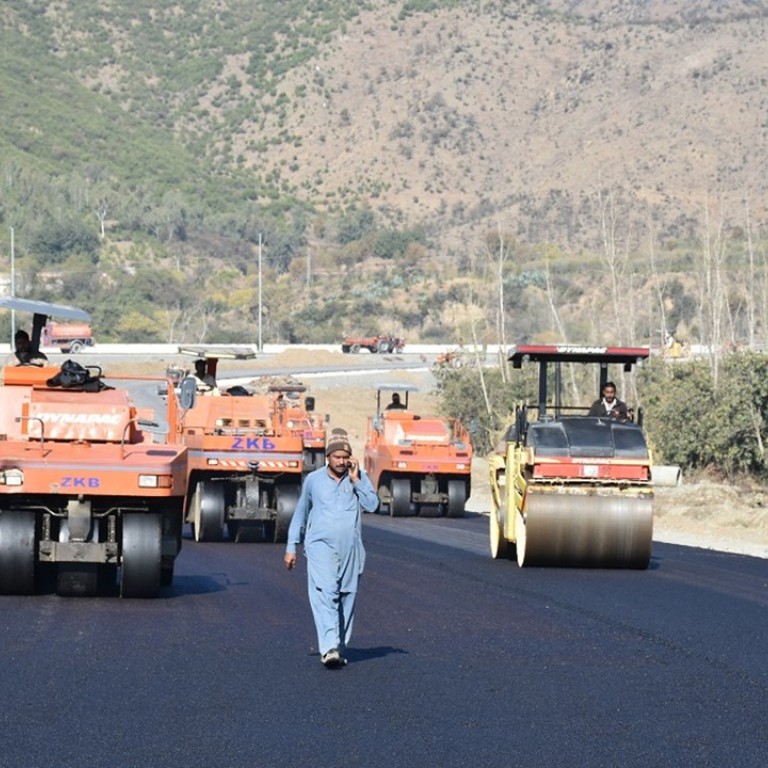Advertisement
Advertisement

China’s ‘Belt and Road Initiative’ is no more imperial than Pax Americana – and the data shows it is more magnanimous
Friedrich Wu says critiques of Chinese financing of infrastructure projects in developing economies smack of double standards, while the data does not support claims of politically motivated lending
Since Chinese President Xi Jinping unveiled his country’s ambitious “Belt and Road Initiative” in 2013, some detractors in Asia and the West are looking at it as the most audacious challenge yet to America’s global primacy. Since the Chinese government, banks and state-owned enterprises will be the main financing sources for the construction of these transcontinental infrastructure projects, critics have warned that China could become a “new imperial power” pursuing a “debt-trap diplomacy”.
Historically, all great powers practise(d) financial diplomacy. In the 19th century, Pax Britannica flexed the pound sterling to fortify its dominance in international commerce. In the post-second-world-war era, Pax Americana wielded the US dollar to reinforce its economic and geopolitical primacies. Thus, it is not surprising that Beijing, with burgeoning financial muscle, is now conducting its own renminbi statecraft around the globe. It is disturbing that commentators in the West apply double standards to prejudge China’s global intentions and behaviours – Pax Britannica and Pax Americana are considered inherently benevolent, but when Beijing (or Pax Sinica) embarks on the same path, it is derided as insidiously conspiratorial.
Realistically, any creditor that finances long-repayment infrastructural projects in weak emerging economies and fragile states must have a strong stomach to absorb huge political and financial risks. Lenders to countries beset by high economic and political volatilities – many of which lie along the paths of the Belt and Road Initiative – can never be sure whether successive governments would honour their sovereign debts. So if China is willing to take on the calculated hazards, while other more risk-averse financiers abstain, these fragile states will be the beneficiaries.
It is not surprising that Beijing, with burgeoning financial muscle, is now conducting its own renminbi statecraft around the globe
Needless to say, China is not financing risky projects in these wobbly countries altruistically. Being too generous in granting free overseas development aid will only encourage moral hazard and waste, not to mention corruption, in recipient countries where governance standards are not high. So there is nothing wrong with Chinese lenders demanding higher risk premiums as well as valuable collateral from “subprime” borrowers, while expecting timely repayments of principals and interest. How could these customary requirements possibly render Beijing a “rogue lender” or “imperialist creditor”, since all development financing institutions, including the World Bank and Asian Development Bank, also oblige their debtors to fully repay their loans?
Beijing is actually behaving more magnanimously toward its borrowers. According to the most comprehensive data set on China’s development financing on a global scale, compiled and released by AidData at the College of William and Mary, about four-fifths of China’s development lending is on concessionary terms “at below-market interest rates”. Reviewing the same, David Dollar, senior fellow at the Brookings Institution and a former US Treasury official, observes that “Chinese lending in recent years is indiscriminate in terms of geography and quality of governance, suggesting that it is demand-driven rather than supply-driven by a Chinese master plan”. An examination of loans dispersed by the Beijing-based Asian Infrastructure Investment Bank in the first two years of its operations further confirms the absence of a political agenda in China’s development financing. Notwithstanding the geopolitical rivalry between Beijing and New Delhi, of the 24 approved projects covering 12 countries with a combined credit volume of US$4.23 billion, India alone has bagged five projects totalling US$1.07 billion (or about 25 per cent).
That China’s financial largesse to emerging economies confers some political clout to Beijing in the recipient countries is nothing but a normal dividend in international relations. This “money-confers-influence” phenomenon is just as common in Washington, Wall Street or even Hollywood. As for the accusations of Beijing practising “debt-trap diplomacy”, those are merely ill-informed diatribes by critics in Washington where the profligate and cash-strapped government needs to borrow 45 cents for every dollar it spends, is beleaguered by periodic shutdowns and debt-ceiling crises, yet still insists on funding protracted, strategically goalless and unwinnable conflicts in far-flung corners of the Earth.
Dr Friedrich Wu is an adjunct associate professor at the S. Rajaratnam School of International Studies in Nanyang Technological University, Singapore
This article appeared in the South China Morning Post print edition as: Is China pursuing debt-trap diplomacy? Look at the data

Post